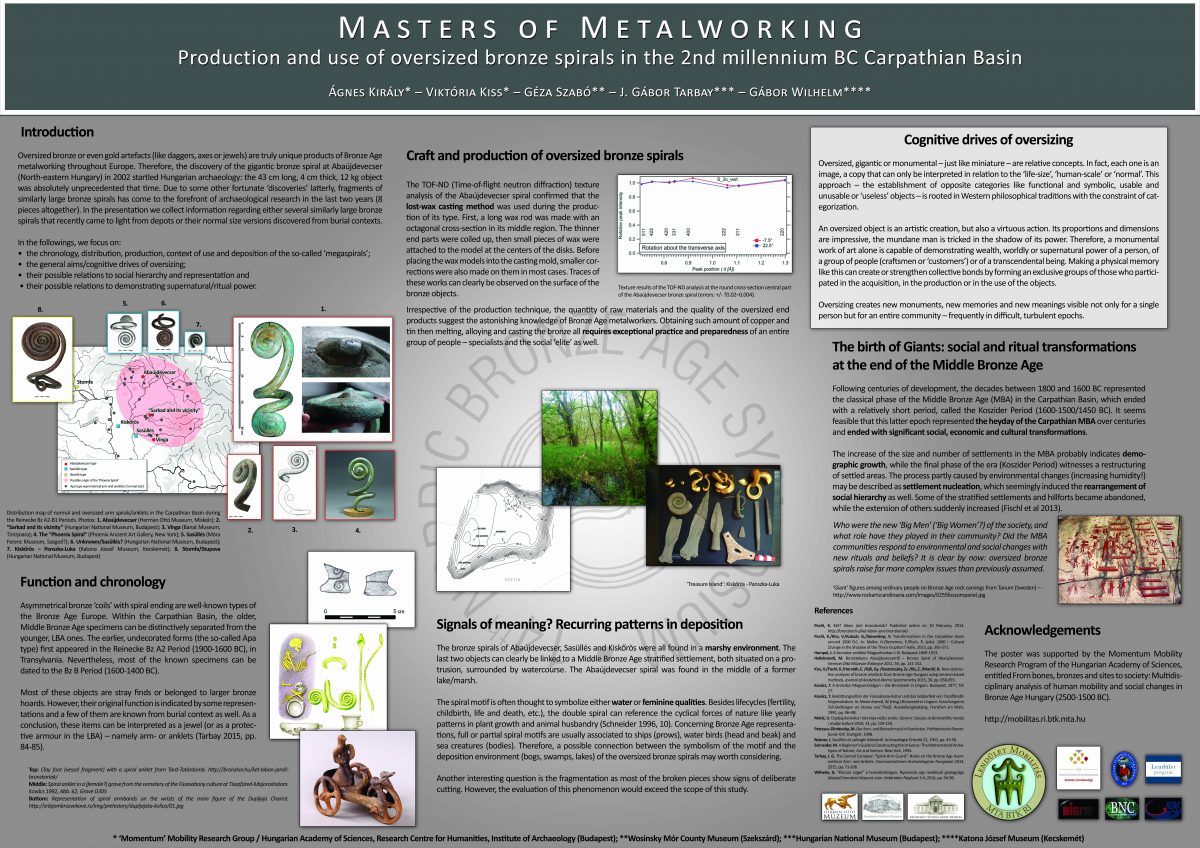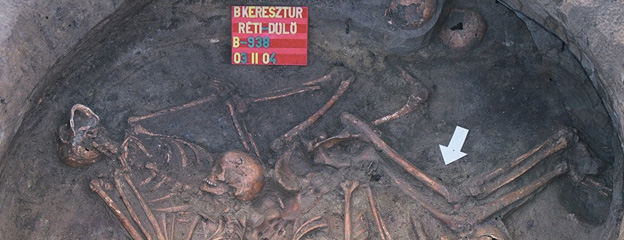14th Nordic Bronze Age Symposium
In 2017, the 40th anniversary of the Nordic Bronze Age Symposium series will be celebrated with the 14th international conference in Oslo, June 6-10.
We present a poster on the conference about a rare type of artwork from the Carpathian Bronze Age, evaluated from technological and social archaeological perspectives. The discovery of the gigantic bronze spiral at Abaújdevecser (North-eastern Hungary) in 2002 startled Hungarian archaeology: the 43 cm long, 4 cm thick, 12 kg object was absolutely unprecedented that time. Due to some other fortunate ‘discoveries’ latterly, fragments of similarly large bronze spirals has come to the forefront of archaeological research in the last few years.
The type corresponds to some jewels dated to the end of the Middle Bronze Age, namely the arm- or aklets known from treasures, depictions and some female graves. However, the production of the huge, complex and very heavy specimens is a clear industrial peak performance of the era (approximately 1600–1400 BC). The collecting, alloying, melting and casting of such amount of raw materials requires a high degree of social cooperation and assumes a certain (economic or ritual) hierarchy or social stratification.
Oversizing, the phenomenon of magnifying the extent of mundane objects, is an interesting question in itself. Either if these artefacts represented individual power or served as attributes associated with supernatural imagery, it can rightly be assumed that they have not been hidden but they have been in use before a wider community instead (even if this community is only a narrow elite, a “group of privileges”). Another specialty is that intentional cutting can be traced in case of most oversized spirals, and that specimens with known find circumstances can be linked without exception to a swampy, wet environment .
Similar, huge bronze objects are known from some sites of Northern and Western Europe, but in these regions, the majority of them are weapons (daggers, axes). The difference between the two domains is likely to be found in the symbolism of the two types of objects and in the different cognitive-ritual backgrounds of the making communities.

According to our plans, the non-destructive composition analysis of the objects as well as the microtopographic research of the known-context pieces will take place during the summer and fall, so that further results can be published in the conference volume.
The detailed programme of the conference is available here.
Ágnes Király, Viktória Kiss, Géza Szabó, Gábor J. Tarbay, Gábor Wilhelm
Masters of metalworking: production and use of oversized bronze spirals in the 2nd millennium BC Carpathian Basin
Oversized bronze (or even gold) artefacts are truly unique products of Bronze Age metalworking. Until the beginning of the 2000s, only a few examples of gigantic metal objects have been known from this era throughout Europe (bronze axes or daggers from Jütland and Denmark, bronze dagger from Norfolk, gold torcs from Cambridgeshire, Corrard or Northern Ireland are also quite recent finds). It is not surprising that finding the Abaújdevecser bronze spiral (North-eastern Hungary) in 2002 startled Hungarian archaeology: the 43 cm long, 4 cm thick, 12 kg object had been absolutely individual that time. Due to some fortunate ‘discoveries’ latterly, fragments of similarly large bronze spirals has come to the forefront of archaeological research. Sadly enough, however, the exact find places of most of these artefacts are completely undetectable. As far as we can assume, they all had been produced in the eastern parts of the Carpathian Basin. But when, within which social context and most importantly why? Our poster focuses on these questions and attempt to shed some light on the chronology, the production technology, the possible – practical, symbolic/ritual or even social – function of these objects.








